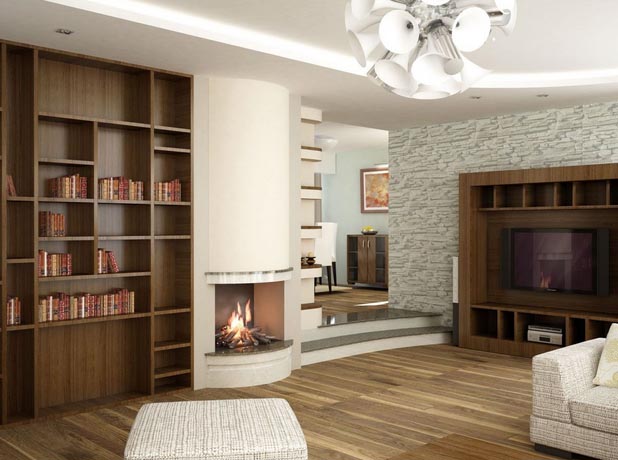Tips for Small Space Living
June 30, 2015 Guest Post
As the cost of living continues to increase across the country, many individuals and families are considering buying or even renting smaller homes. But living in a smaller home can make you feel claustrophobic and trapped, and messes can easily take over a space if you’re not up-to-date on your cleaning. Sound familiar? Instead of lamenting your small space, here are some design tips and tricks to help you make your space feel larger without breaking the bank with costly constructions projects. Get ready to feel a little less confined.
Mirrors
Mirrors are a small-homeowner’s number one choice to make a space feel more expansive. Hung on any wall in any room, mirrors help bounce light into dark corners and help you live into the entire room without taking up much space on their own. You can use mirrors as decorative additions to your interior design and there’s no limit to the number of mirrors allowed in one space, especially if the mirrors are different shapes and sizes. Well-positioned, they can reflect the image of your favorite piece decor for added attention.
Color
Using color effectively can really make a difference in a small space but be wary of indulging in too much of a good thing. Too many dark walls can close in a space; instead, use light or neutral colors and add an accent wall or accent piece to draw the eye to a particular focal point. A tall, bright display case can help a small living room feel dynamic and exciting while also opening up the space by drawing the eye vertically without losing the light to dark walls.
Windows
Though there are many inexpensive ways to change the number, size, or placement of the windows in your home, you can use the windows to make a space feel much larger than it is. Choose decorative window treatments but make sure they’re tall and hang them from the very top of the wall, even if the windows are much shorter. This will draw the eye up the wall and make use of some previously unused space, while also adding color and style. Be sure to match the window treatments to the rest of your style and choose a material that will let in plenty of natural light, if that’s a priority for you.
Shelving
Clutter always seems to take up more space in smaller rooms, and storage cabinets can look clunky and take up even more open space than the clutter originally did. Instead, take advantage of open shelving to keep the open feeling of the room but provide some organization for clutter that would otherwise become mess. Shelves can be installed in most spaces and can be designed (or chosen) to add subtle style and decoration to a space without losing functionality. Higher shelving can be a great option for displaying less used items and again drawing the eye up the walls and reinforcing the vertical space in a room.
Use All Available Space (in other words, Get Creative!)
Looking at a floorplan or thinking about the square footage is only one aspect of how big or small a room may feel, but it’s easy to forget about the other dimensions. Yet getting creative about using those other dimensions can make all the difference. Floor-to-ceiling bookcases can reinforce the vertical space available in a room while providing more storage in essentially the same amount of space as a shorter bookcase. Similarly, placing a built-in desk between two closets, for instance, can create usable, livable space where there previously was none. Every home is different, so don’t be afraid to experiment and find what fits your space. You’ll be living large in no time!
Ty Leisey is a writer for homeyou, a site which connects homeowners looking for remodeling services to skilled contractors right in their neighborhood. Visit homeyou for inspiration, cost information, and fun design tips for your home and be sure to follow #teamhomeyou on Facebook, Twitter, Instagram, and Pinterest.
Share it with Your Friend

